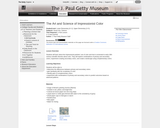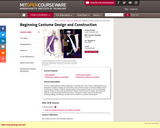Film Appreciation is an open educational resource which was developed with funding from an Affordable Learning Georgia Textbook Transformation Grant. It is dedicated to the remarkable faculty and students of the Communication, Media, and Journalism department at the University of North Georgia. Thank you for inspiring us to take on this project.
INTRODUCTION
Introduction
Acknowledgement
Copyright
Table of Contents
Introduction - What is Film?
Features of the Textbook
CHAPTER 1 - FILM HISTORY
Silent Cinema - The Beginning of Film Form (1895 – 1928)
World War I and International Avant-Garde Cinema
Questions for Consideration - Film History
CHAPTER 2 - NARRATION
Narratives
Story, Plot, and Narration
Three-Act Structure
Narrators
The Rashomon Effect
Questions for Consideration - Narratives
Time Travel Narratives
CHAPTER 3 - MISE-EN-SCÈNE
Mise-En-Scène
Sets, Props, and Costumes
Performance
Lighting
Questions for Consideration - Lighting for Gender and Race
Color
CHAPTER 4 - CINEMATOGRAPHY
Cinematography
Camera Placement
Camera Movement
Lenses
Aspect Ratio
Early Film Gimmicks
Color
Special Effects
Questions for Consideration - Cinematography
CHAPTER 5 - EDITING
Editing
The Kuleshov Effect
Discontinuity
Questions for Consideration - Editing
CHAPTER 6 - SOUND
Sound
Silent Cinema to the "Talkies"
Voice
Sound Effects
Music
Sound Design
Questions for Consideration - Sound
CHAPTER 7 - GENRE
Genre
Romantic Comedy
Science Fiction
Horror
Film Noir
Questions for Consideration - Genre
CHAPTER 8 - BEYOND GENRE
Cinemas Beyond Genre
Documentary
Experimental Film
Norman McLaren
Questions for Consideration - Beyond Genre
CHAPTER 9 - WRITING FILM ANALYSIS
Film Analysis
Questions to Ask
Sample of Close Analysis
Sample of Compare-and-Contrast Analysis
Writing Tipes
CONCLUSION
GLOSSARY








![Art Appreciation Open Educational Resource [Complete Collection of Lessons]](https://img.oercommons.org/160x134/microsite-louis-prod/media/screenshots/82058811b4c343b755c2d9feb4342b9cc0c14b3376641eebb5f91dedc6644eea.png)











